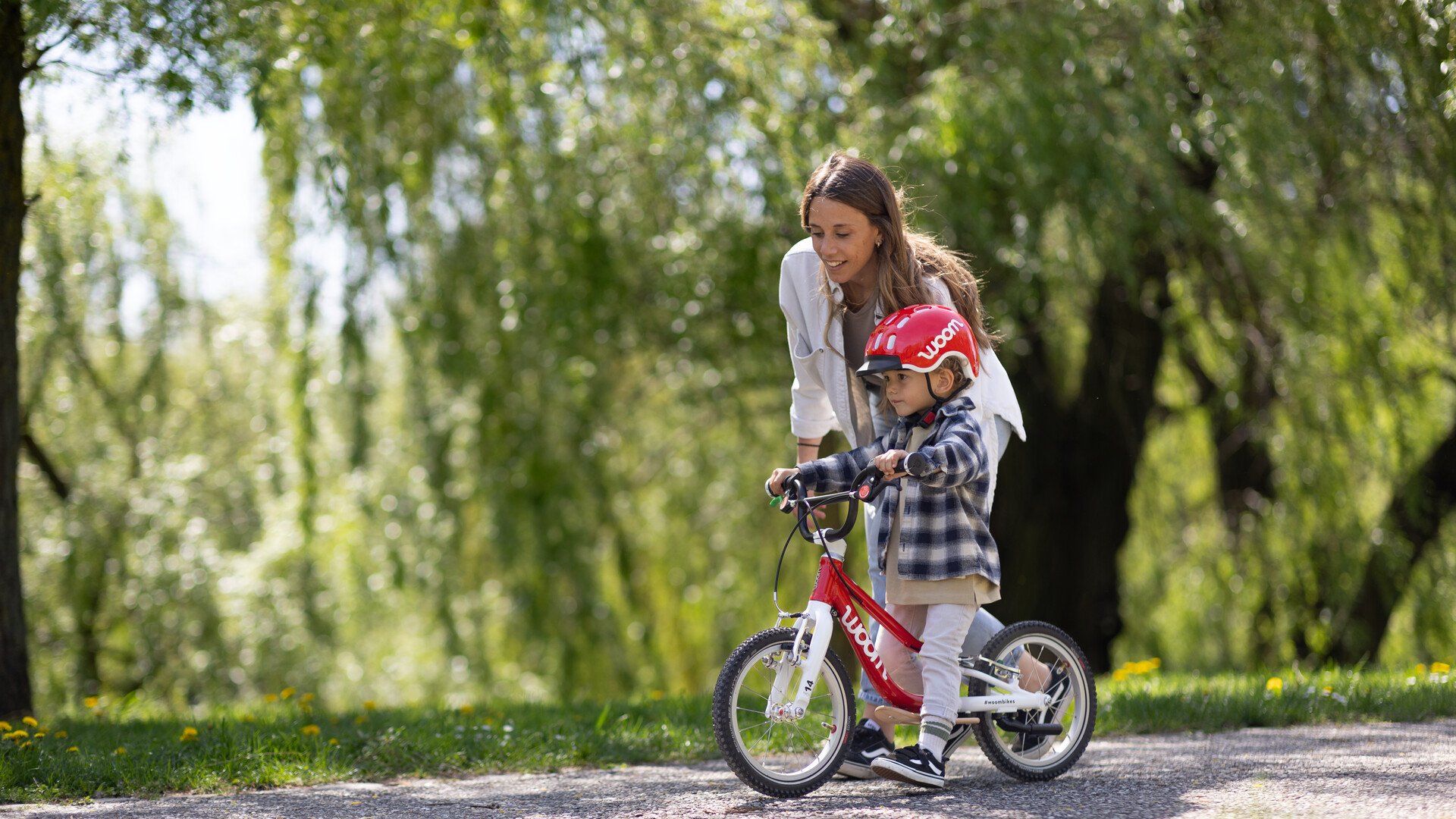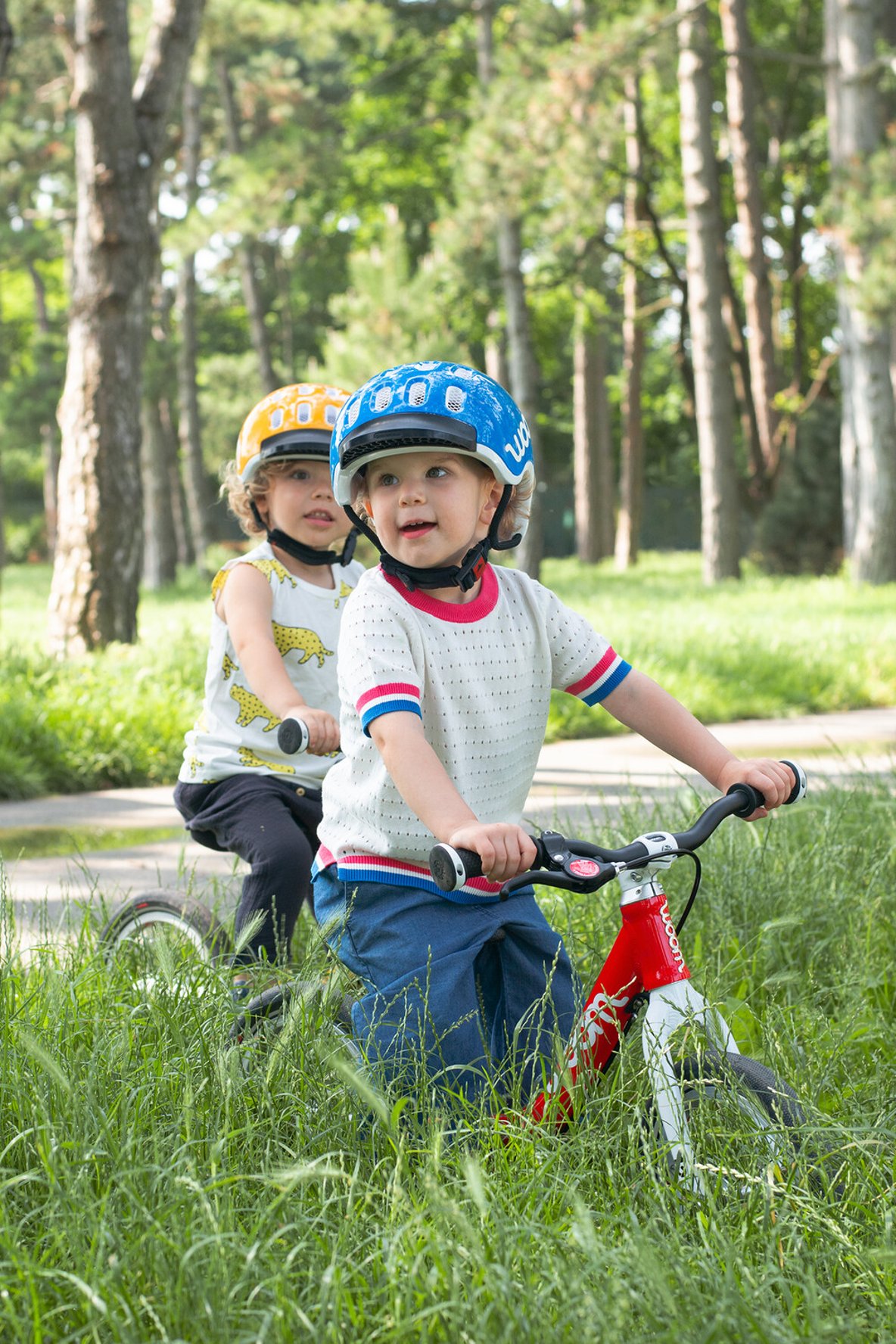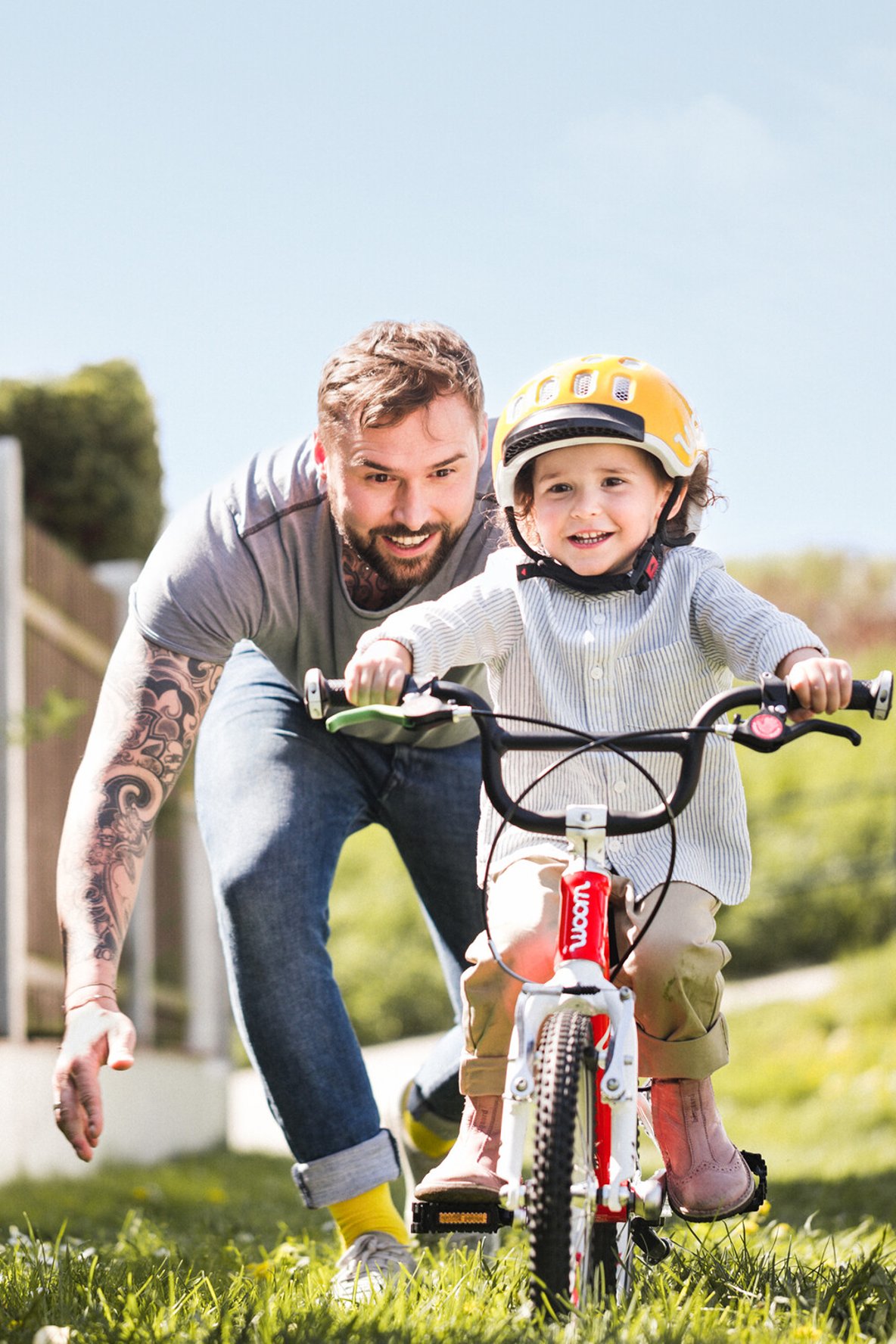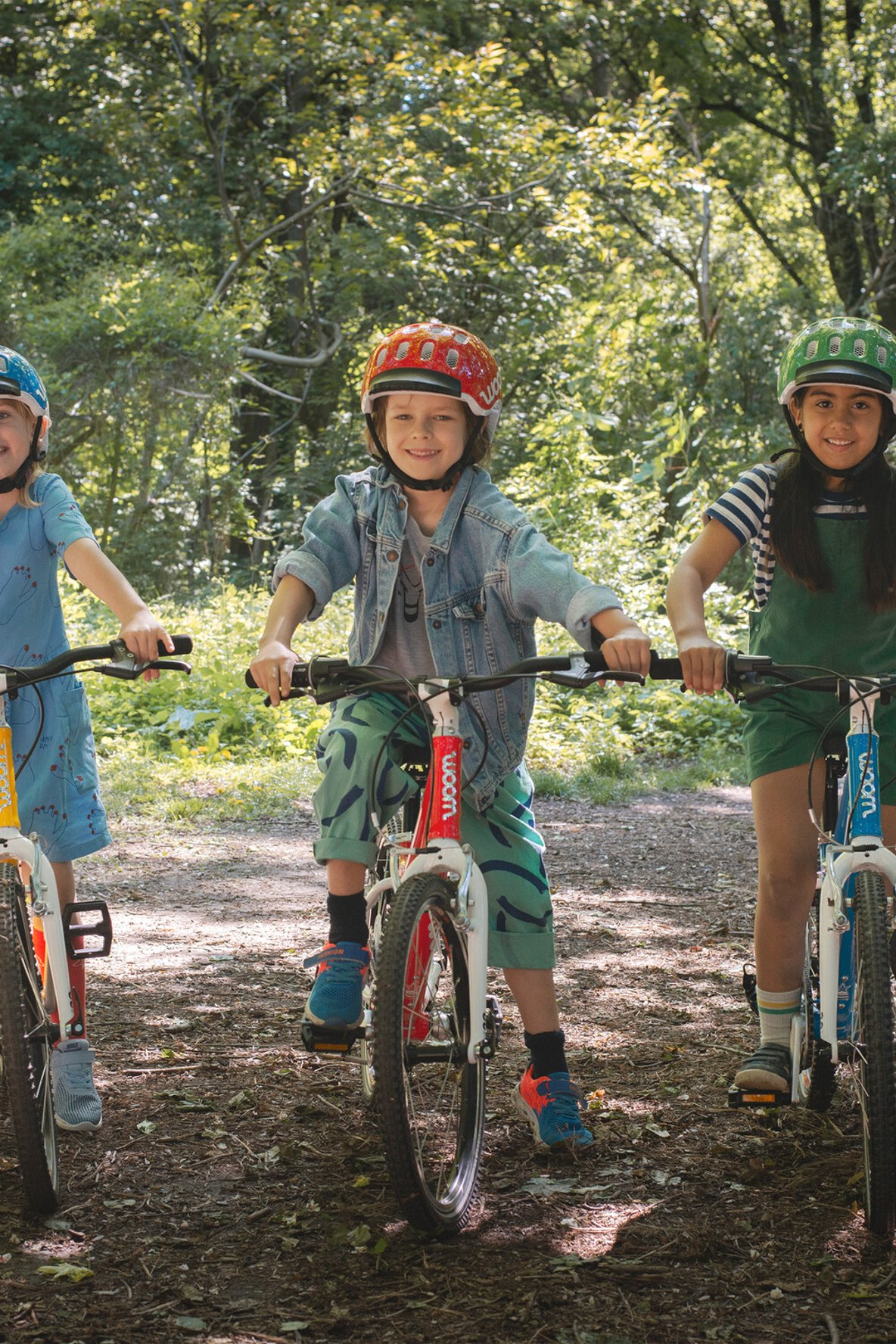Balance bike or stabilizers?
Balance bikes are a fun way for children to work on their balance, so their transition to a bike with pedals is smooth and simple. If they learn to ride a bike with stabilizers, that magic moment comes later and often with more difficulty.

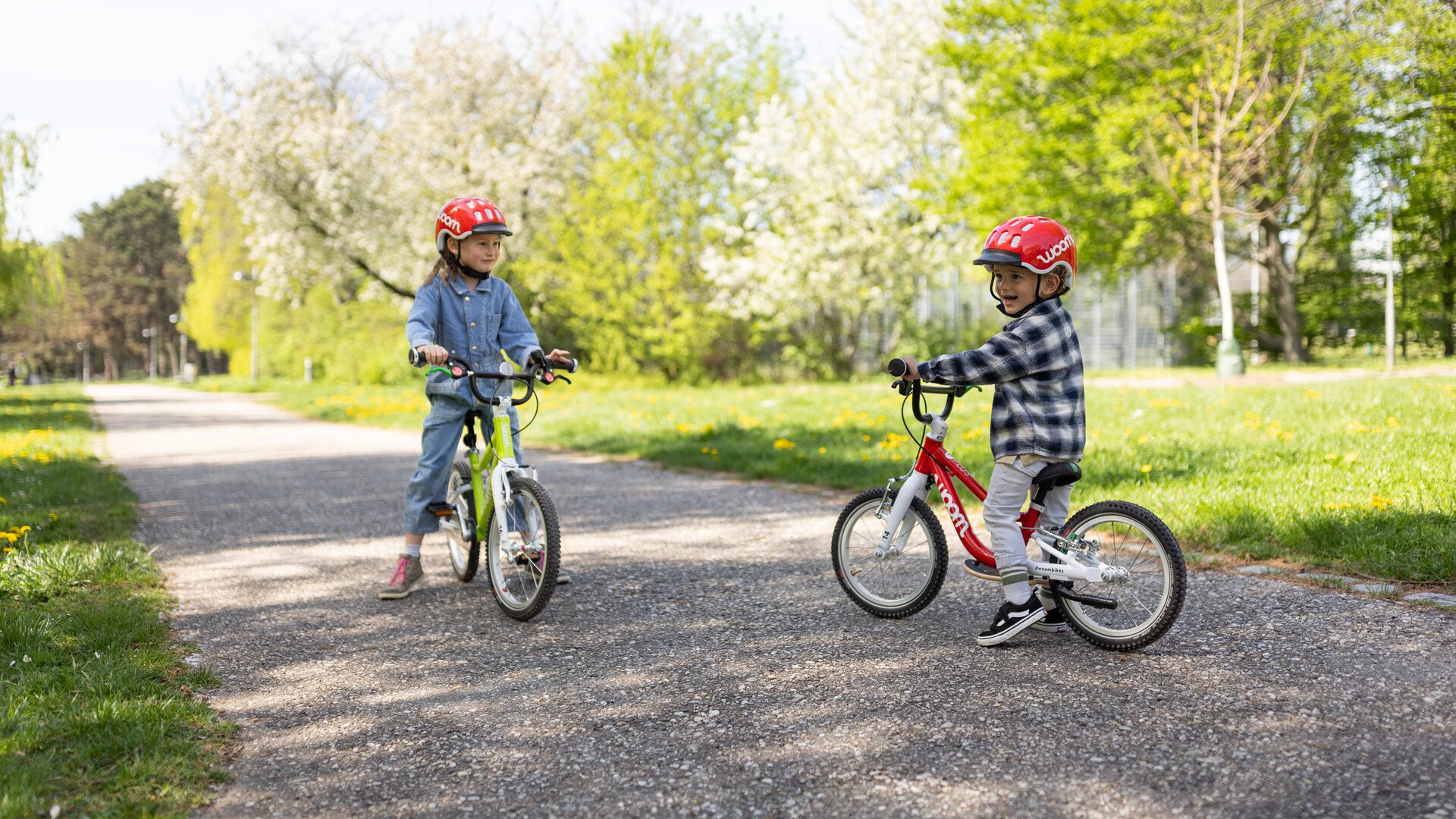
Most of us parents will remember our first attempts at riding a bike with wobbly stabilizers. But there's a much more effective way to prepare children for riding a bike these days. Balance bikes have been considered a better alternative to stabilizers for some time now.
So what makes them such a smart choice for kids who are just starting out on two wheels? And why would we advise against buying your child a bike with stabilizers?
Ultimately, children can pick up the core skills they need to ride a bike – balance and coordination – and have a whole lot of fun at the same time when they're out riding their balance bike.
By comparison, stabilizers are counterproductive. Children can't learn how to balance and end up developing bad habits that are difficult to unlearn later down the line.
Benefits of balance bikes
- Size and weight: Balance bikes are designed to be compact and lightweight enough that even the smallest children can handle them. This means the fun times can start from the very first bike ride.
- Early independence: Children who ride a balance bike find their independence sooner, leaving them free to act on their natural urge to move.
- Full-body workout: Balance bikes work all the muscles in your child's body and help them develop their motor skills. They have to coordinate their arms and legs but won't feel overwhelmed because they're already familiar with the steady walking motion.
- Family activity: It's much easier for the whole family to get out and about with a balance bike on the scene. Your child will be able to cover longer distances, so you can set off on proper adventures together. You can even turn the school or nursery run into a fun family activity.
- Reduced risk of falling: If your child's balance bike starts to tip to one side, they can have their feet safely on the ground in no time. Or they can steady their bike by shifting their weight.
- Gentler falls: Even if your child does happen to fall off their balance bike, there's generally a low risk of them hurting themselves. Just think – they'll be traveling at such a slow speed and low height off the ground.
- Fun learning process: This has to be the biggest benefit of all. Your child will learn to keep their balance from the beginning – and they'll have so much fun along the way. Intuitive balancing movements and slight shifts in weight keep the balance bike steady while your child is developing their sense of balance.
Downsides of stabilizers
- No balance required: When your child is riding a bike with stabilizers, they're not able to balance out movements. Even shifting their own weight has no impact on the positioning of the bike. This also means that the bike wobbles and quickly loses contact with the ground if it's uneven or bumpy.
- Wobbly feeling: Every time your child shifts their weight on a bike with stabilizers, it feels horrible and wobbly instead of steady and stable. As a result, they will avoid making those crucial balancing movements and keep relying on a stabilizer wheel to give them a comforting sense of stability.
- Unnatural position: Your child will get used to riding around corners in an unnatural position. They'll be leaning their body outward instead of inward, which is the opposite of what they should be learning in preparation for the transition to a pedal bike. In other words, stabilizers are counterintuitive and they will stop your child from developing a natural sense of balance.
- Slower transition to a bike: Your child will find it much harder to ride a bike without stabilizers if they have been relying on stabilizers. They will have to unlearn all the bad habits they've picked up but also learn how to keep their balance from scratch. It's easy to avoid this unnecessarily steep learning curve.
When is the right time for a balance bike?
Choosing the right moment to introduce your child to a balance bike depends on their personal development and has very little to do with their age. It's important that they're steady when standing on two feet and walking.
A word of advice... Don't be disappointed if your child doesn't take to riding their balance bike right away. It's likely that they will just want to explore their new mode of transport to start with and they may end up just pushing their balance bike around. Give your child as much time as they need. Trust them to make their own decision about when they're ready to try sitting on the saddle.
When the moment does come, your child should start walking with their legs on either side of the balance bike. They say that practice makes perfect... You'll notice that your child's strides gradually become longer as they build up their confidence. Before you know it, they'll be switching intuitively between running and rolling.
And then it won't be long before they're putting their legs in the air and maintaining their balance over impressive stretches all the time.
Kids usually also tend to learn the correct steering motion, which involves coordinating their eyes and hands, on their own. In next to no time, they'll be proudly navigating around their first corners.
Learning how to brake properly
Your child will probably start off using their feet to brake à la Fred Flintstone. But it's still a good idea to show them how to use the brake lever properly early on. This is an important skill that will help with their smooth transition to a bike with pedals.
Just make sure that the hand brake is suitable for little hands and short fingers. Your child could end up getting frustrated very quickly if they're struggling to reach the lever.
That's exactly why we've equipped our woom balance bikes with a special, easy-to-reach brake lever that little ones can use to bring their bike to a safe stop with minimal hand strength.
>> Read more about why it's so important for our balance bikes to have a hand brake and what boxes a hand brake needs to tick to be effective here.
Once your child has these successful experiences under their belt, they'll soon be zooming around on their balance bike as though they've been doing it forever. This is the key to preparing them for the transition to pedals and unlocking a lifetime of positive bike experiences.
Make way for your child's first bike!
With a perfected sense of balance, spot-on steering and brilliant braking skills on their side, your child will probably have no problem upgrading to a pedal bike. All that practice on their balance bike leaves them free to focus their attention on the all-important new skill they need to master – pedaling.
How can you support your child when they first try to ride a bike?
- Explain and demonstrate
Before your child hops onto their bike for the first time, take them through the basics of how it works. Lift it up so you can show them how the cranks set the rear wheel in motion and how the brakes work. - Pick the perfect place
When your child is ready to jump on the saddle, find somewhere that's not close to any roads. You want a gentle slope because this will give your child the momentum they need to get their feet onto the pedals and make it easier for them to get their balance. - Support them to start with
You can help your child by gently resting a hand on their shoulder or seat and running along beside them. This will steady them and avoid any accidents. - Stand back and watch
After a few practice laps, it'll be time for you to be brave and let go. You'll be amazed at how quickly your child can pedal all on their own and keep their balance even when the ground isn't perfectly even.
